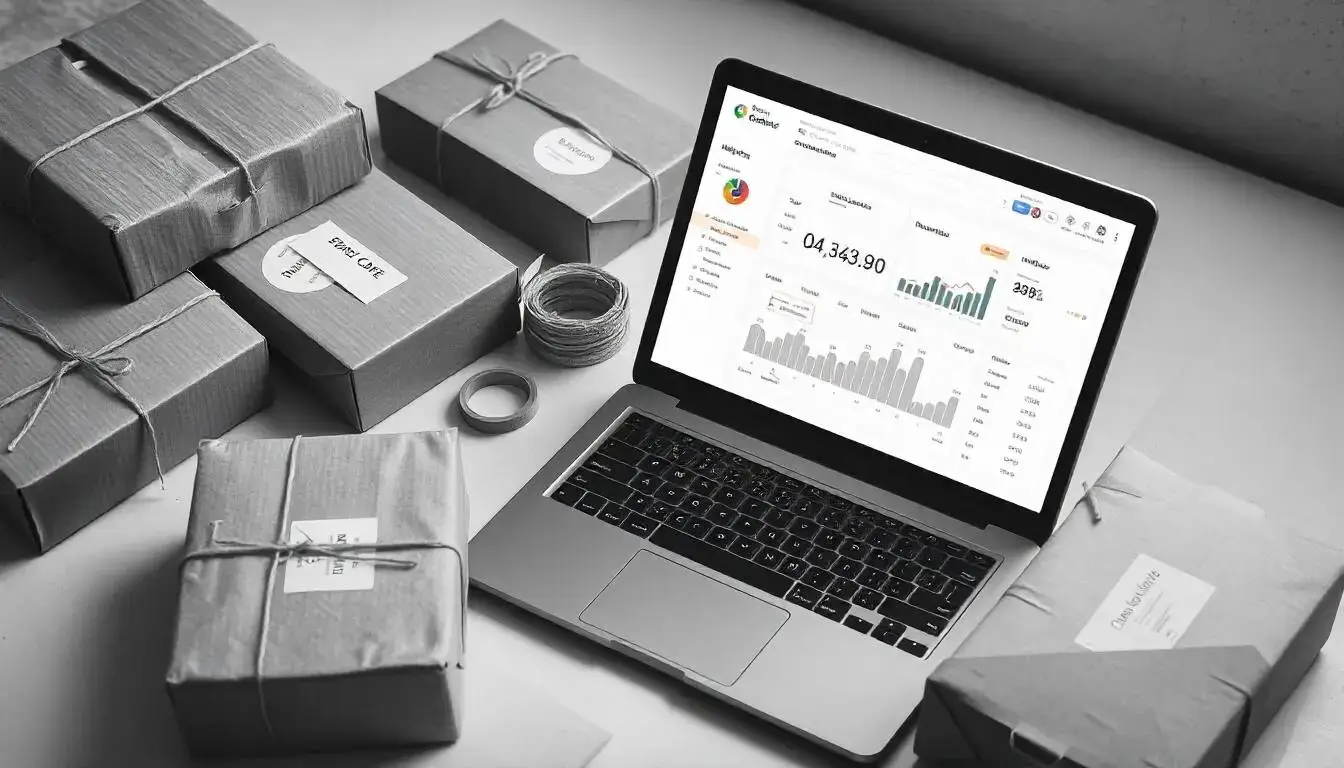Introduction
Starting an ecommerce business in 2025 is a lucrative opportunity, with online shopping continuing to dominate the global market. This guide will walk you through the essential steps to build and grow a successful ecommerce business from scratch. Whether you’re a beginner or looking to enhance your existing online store, this step-by-step guide has got you covered.
Why Start an Ecommerce Business in 2025?
The ecommerce industry has witnessed exponential growth, and 2025 is expected to be even more promising. Here’s why starting an ecommerce business now is a smart decision:
- Expanding Market: The global ecommerce market is projected to reach $7.4 trillion by 2025.
- Low Barrier to Entry: With platforms like Shopify and WooCommerce, setting up a store is easier than ever.
- Flexibility: Ecommerce businesses can be operated from anywhere, offering unparalleled freedom.
- Profit Potential: Lower operational costs and global reach make it highly profitable.
Step 1: Research Your Market
1.1 Identify Your Niche
Choosing the right niche is critical to the success of your ecommerce business. Focus on:
- Passion and Expertise: What are you passionate about?
- Market Demand: Use tools like Google Trends and Amazon Best Sellers to gauge interest.
- Competition Analysis: Study competitors and identify gaps in the market.
1.2 Understand Your Target Audience
Define your ideal customer by answering these questions:
- Who are they (age, gender, location)?
- What are their pain points?
- How can your product solve their problems?
Step 2: Choose a Business Model
Popular Ecommerce Business Models
- Dropshipping: Sell without managing inventory.
- Wholesale and Warehousing: Buy in bulk and manage inventory yourself.
- Private Labeling: Create and sell branded products.
- Subscription-Based: Offer recurring deliveries of products or services.
Choose a model that aligns with your budget, skills, and resources.
Step 3: Build Your Ecommerce Website
3.1 Select a Platform
Popular ecommerce platforms include:
- Shopify: User-friendly with powerful features.
- WooCommerce: Great for WordPress users.
- BigCommerce: Ideal for scaling businesses.
3.2 Choose a Domain Name
Your domain name should be:
- Short and memorable.
- Relevant to your business.
- Easy to spell and type.
3.3 Design Your Store
Ensure your ecommerce store is:
- Responsive: Optimized for mobile devices.
- User-Friendly: Easy navigation and intuitive design.
- Visually Appealing: Use high-quality images and professional layouts.
Step 4: Source Your Products

4.1 Find Reliable Suppliers
- Use platforms like Alibaba, AliExpress, or SaleHoo.
- Build relationships with trustworthy suppliers.
4.2 Test Product Quality
Order samples to ensure quality meets your standards.
Step 5: Set Up Payment and Shipping
5.1 Payment Gateways
Choose secure and trusted payment gateways like:
- PayPal
- Stripe
- Square
5.2 Shipping Options
Offer multiple shipping options, including:
- Free shipping.
- Express delivery.
- International shipping.
Step 6: Implement Marketing Strategies

6.1 Optimize for SEO
- Use relevant keywords like “ecommerce business” in titles, descriptions, and content.
- Optimize product pages with meta tags and alt texts.
6.2 Leverage Social Media
- Run ads on platforms like Facebook, Instagram, and TikTok.
- Post engaging content to attract followers.
6.3 Email Marketing
Build an email list to send newsletters, promotions, and updates.
6.4 Collaborate with Influencers
Partner with influencers in your niche to promote your products.
Step 7: Monitor and Optimize
7.1 Track Metrics
Use tools like Google Analytics to track:
- Traffic
- Conversion rates
- Customer behavior
7.2 Gather Feedback
Encourage customers to leave reviews and provide feedback.
7.3 Continuously Improve
Regularly update your website, products, and strategies to stay competitive.
Conclusion
Starting a successful ecommerce business in 2025 is a rewarding endeavor, but it requires careful planning and execution. By following this guide, you can build a thriving online store that stands out in the competitive ecommerce landscape. Now is the perfect time to take action and turn your dream into reality. Good luck!
Do you have any questions or need further assistance with starting your ecommerce business? Let us know in the comments below!
- Start Earning: How to Make Money on Taobao Without Big Investment
- Can You Use PayPal on Taobao? Here’s What You Need to Know (2025 Update)
- AI vs. Manual Ecommerce Management: What’s More Effective in 2025?
- Shopify 1099-K Reporting Rules Are Changing: How It Affects Your Online Store
- AliExpress vs Amazon: Which Is Better for Budget Shoppers?
- Is AliExpress Safe in 2025? What Buyers Need to Know Today
- Why Is Pandabuy So Popular? A Deep Dive into Its Rise on Social Media
- How Safe Is Pandabuy? What Every New Shopper Should Know
- How to Use Pandabuy in 2025: Step-by-Step for First-Time Buyers
- Taobao Shipping Explained: Delivery Times & Costs in 2025
- Taobao Payment Not Working Internationally? Here’s Why
- Shopify Experts vs DIY: What’s Best for Your Business?
- Top Dropshipping Businesses to Start in 2025
- How to Use Taobao in English: A Step-by-Step Guide
- Taobao Login Issues & Link Sharing Problems: How to Fix Them
- Is Taobao Safe? What You Need to Know Before Buying
- Shogun Shopify: The Best Page Builder for Your Store
- Magento Marketplace vs Shopify: Which Platform is Best for Sellers?
- How to Hire a WooCommerce Expert: Skills, Costs, and Best Platforms
- Ecommerce Fulfillment Services: How to Choose the Best Solution for Your Business
- Ecommerce explicado: Tipos, beneficios y claves del éxito
- Ecommerce: ¿Qué es y cómo empezar tu tienda online en 2025?
- The Ecommerce Equation: Unlocking Profitable Online Sales Strategies
- Crack the Ecommerce Equation: The Formula for Success in 2025
- Retail Ecommerce Ventures: Transforming Brands into Online Success in 2025
- Ecommerce Photography Tips: Shoot Stunning Product Images Like a Pro
- Best Cameras and Tools for Ecommerce Photography in 2025
- Top B2B Ecommerce Solutions for 2025: Powering Your Business Growth
- How to Choose the Best B2B Ecommerce Solution: A Complete Guide
- Best Ecommerce Website Creators for 2025: Build Your Store in Minutes
- 5 Reasons Why Ecommdirect is a Game-Changer for Online Retailers
- EcommDirect: The Future of Seamless Online Shopping in 2025
- Connective Ecommerce: The Future of Seamless Online Shopping
- Top Ecommerce Web Development Services in Melbourne for 2025
- Ecommerce Web Development Melbourne: Build a High-Converting Online Store
- Top Tips for Choosing the Right Ecommerce Advertising Agency
- Why Every Online Store Needs an Ecommerce Advertising Agency
- Boost Your Sales with the Best Ecommerce Advertising Agency in 2025
- Magento vs. Other Ecommerce Platforms: Which is Best for Your Store?
- Top Features of the Magento Ecommerce Platform You Need to Know
- How to Boost Sales with the Magento Ecommerce Platform
- Top Ecommerce SEO Experts: Boost Your Online Store Traffic
- Why Hiring Ecommerce SEO Experts Is a Game-Changer for Your Store
- Ecommerce Website Development in Dubai: Build Your Store for Success
- Protect Your Online Store with the Right Business Insurance
- Top Insurance Options for Ecommerce Entrepreneurs
- Taobao Shopping Made Easy: Tips for Global Buyers
- Ecommerce Business Insurance: Why It Matters in 2025
- Why Ecommerce Business Is the Best Startup Option Today
- Ecommerce Business Marketing Strategies That Drive Sales
- 10 Common Mistakes to Avoid When Starting an Ecommerce Business
- The Future of Ecommerce Business: Trends to Watch in 2025
- Ecommerce Business Essentials: Tools, Tips, and Strategies for Beginners
- Top 10 Ecommerce Business Ideas to Boost Your Revenue This Year
- How to Start a Successful Ecommerce Business in 2025: A Step-by-Step Guide
- Unlock the Power of Odoo Ecommerce: The Ultimate Solution for Your Online Store
- Expert Ecommerce Website Development Services for Your Store
- Expert Guide to Ecommerce Website Development in Dubai: Build Your Dream Online Store
- Top eCommerce Website Development Companies: Build Your Dream Online Store Today
- Streamlining E-commerce Product Updates with GitHub Workflows
- Monetize Your E-commerce Open-source Projects: A Beginner’s Guide to GitHub Sponsors
- Collaborating with Freelancers on GitHub for E-commerce Projects
- The Role of GitHub in Supporting Multi-language E-commerce Sites
- Using GitHub Actions for E-commerce SEO Audits
- Creating and Managing API Documentation for E-commerce Platforms on GitHub
- Mastering Ecommerce Website Development with GitHub: Tools, Tips, and Best Practices
- Optimizing E-commerce Performance with GitHub Monitoring Tools
- Top GitHub Integrations for Streamlining E-commerce Development and Operations
- Managing Ecommerce Data with GitHub and Git LFS
- Version Control for E-commerce Teams: A Guide to Using Git and GitHub.
- Using GitHub Projects to Manage E-commerce Site Development
- Top GitHub Repos for Enhancing Security on Your E-commerce Site
- Securing Your E-commerce Codebase: Managing Access and Permissions in GitHub
- Managing E-commerce Data with GitHub and Git LFS
- Leveraging GitHub Pages for a Minimalist E-commerce Store


